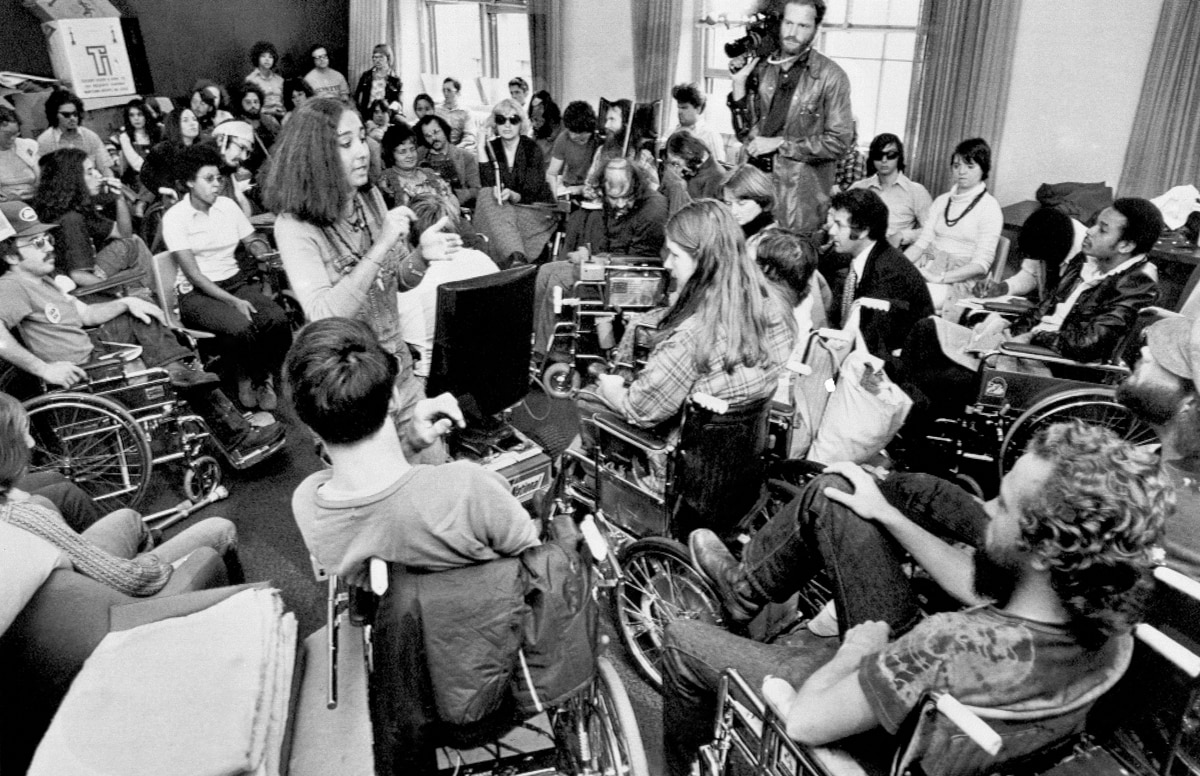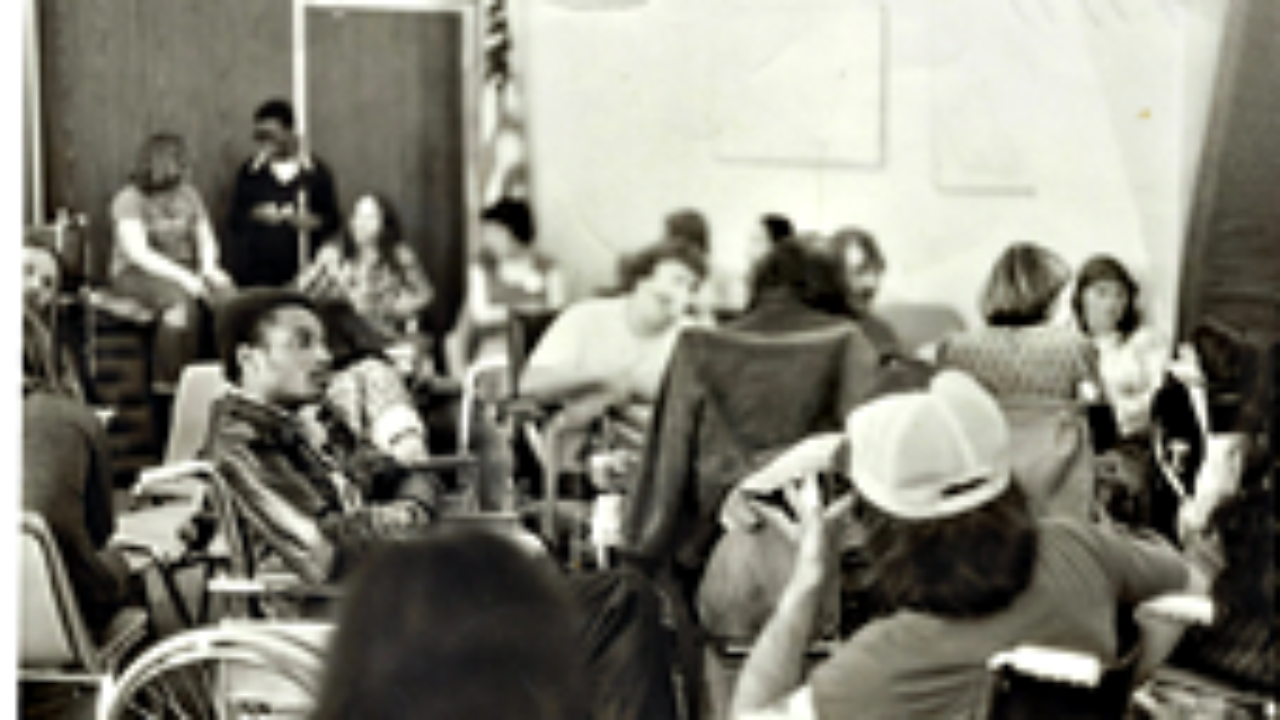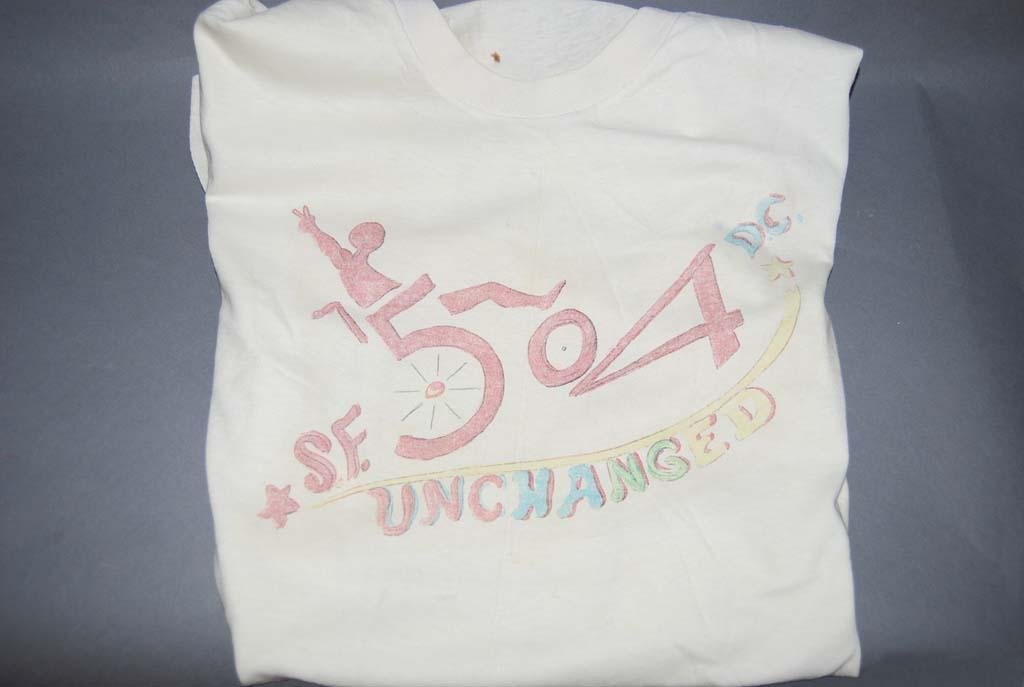Disability Rights Florida Blog
The History of the 504 Sit-In
On April 5, 1977, a group of people with disabilities staged a sit-in protest in San Francisco to demand greater accessibility and accommodations for people with disabilities. This historic protest became known as the "504 Sit-in". This protest progress disability rights in America and helped pave the way for the Americans with Disabilities Act (ADA) to become law later on.
Although there were disability protests and Sit-ins across the country, none lasted nearly as long as the sit-in that happened in San Francisco.
The 504 Sit-in was organized by a group of disability rights activists, with most of them being young and from a wide variety of marginalized identities. Key organizers and participants of the 504 Sit-in included Judy Heumann, Kitty Cone, Brad Lomax, Mary Jane Owen, Corbett O'Toole, and Hale Zukas, among others. The leadership and organizing were primarily led by women, with LGTBQ+ women, such as Kitty Cone, playing an important role. More on other influential leaders, specifically Brad Lomax, in a bit.
What Sparked the 504 Protests?
The protest was sparked by the government's failure to implement Section 504 of the Rehabilitation Act of 1973. The Rehabilitation Act was the first major disability rights legislation to be passed, over 15 years prior to the Americans with Disabilities Act. Section 504 of the Rehabilitation Act prohibited discrimination against people with disabilities in programs and activities receiving federal funding. This included things like libraries, transportation services, schools, etc.
Section 504 states,
No otherwise qualified individual with a disability in the United States, as defined in section 705(20) of this title, shall, solely by reason of her or his disability, be excluded from the participation in, be denied the benefits of, or be subjected to discrimination under any program or activity receiving federal financial assistance or under any program or activity conducted by any Executive agency or by the United States Postal Service.
Despite Section 504 of the Rehabilitation Act being signed into law by President Richard Nixon (albeit after being vetoed twice), Section 504 had not been fully enforced, leaving people with disabilities without the necessary accommodations and access to public services. It remained unenforced and unaddressed for 4 years. This was in large part due to businesses and organizations lobbying against implementing Section 504, arguing that it was burdensome and unfair to expect them to implement accessibility or else lose federal funding.
One of the 504 Sit-in participants Corbett Joan O’Toole shared, “At that time in history, there was simply no access—no right to an education, no public transit. You couldn’t get into a library or city hall, much less a courtroom.” Disabled people wanted to see the government committed to disability inclusion and access. The disabled activists warned that if Joseph A. Califano Jr., who served as the Secretary of Health, Education, and Welfare during President Jimmy Carter's administration, didn’t take action by April 4th, nationwide protests would ensue.
On April 4th, 1977, after the government did not sign the regulations into law, protests took place all over the country. In San Francisco, over 500 disabled individuals and their allies attended a rally on San Francisco’s Civic Center Plaza.

Image Description: Hundreds of disabled protestors and allies gather in San Francisco’s Civic Center Plaza.
Image Credit: The Disability Rights Education and Defense Fund

Image description: Demonstrators with a sign reading “Sign 504 now.”
Image Credit: Anthony Tusler
Why San Francisco's 504 Protest Was Different
Most of the protests happening across the country ended that day. However, the story in San Francisco was different. Following the San Francisco rally, nearly 150 people with disabilities streamed into the Health, Education, and Welfare (HEW) Federal Building. They began climbing to the fourth floor where the HEW regional offices were located. Over 120 activists occupied the building, and they refused to leave the federal building until their demands were met, even when threatened with arrest and eviction.

Image Description: Protestors enter the HEW building
Image Credit: The Disability Rights Education and Defense Fund
Government officials attempted to remove the activists from the building by cutting the phone lines and denying them food, water, medicine, and more. But the disabled protestors were more cunning than them, and they were prepared for this. Deaf and CODA (Child of Deaf Adult) protesters used sign language to communicate through the windows of the building to the outside. They worked with allied groups to get food, medicine, blankets, and more.
The disabled protesters worked closely with and received support from a wide range of organizations and individuals, including labor unions, religious groups, and civil rights activists. Groups that supported the 504 protesters included the Black Panther Party, Glide Memorial Church, Gay Men’s Butterfly Brigade, Delancey Street, the United Farm Workers, the Gray Panthers, Salvation Army, and more. Because of this, the 504 Sit-in is considered an important moment for cross-movement organizing.

Image Description: Dozens of disabled demonstrators gathered inside the HEW building
Image Credit: AP Images

Image Description: Protesters sitting on the group floor of the HEW building
Image Credit: Getty Images
Brad Lomax and the Black Panthers
One of the 504 Sit-in protest leaders, Brad Lomax, a Black man with multiple sclerosis, was a member of the Black Panthers. He was integral in connecting the disabled activists with the Panthers, who provided them with hot meals and supplies needed to withstand the long Sit-in. Corbett O’Toole, one of the disabled protestors, applauded Brad’s work and stated that “the most critical gift given to us by our allies was the Black Panthers’ commitment to feed each protester in the building one hot meal every day... Black Panthers saved the 504 sit-in.” Disabled leaders of the 504 Sit-in widely acknowledge and credit much of the occupation’s success to the Black Panthers.

Image Description: Brad Lomax, center, next to the activist Judy Heumann at a rally in 1977 at Lafayette Square in Washington.
Image Credit: HolLynn D'Lil
Disability Activists Go To D.C.
After the protest had been ongoing for two weeks, a group of activists participating in the Sit-in journeyed to Washington DC to intensify their efforts against Califano. They organized candlelight vigils outside of his residence and attempted to enter his office building by forcefully pushing their wheelchairs against the doors when their request for entry was denied.
While in the capitol, Judy Heumann addressed congressional representatives and reporters:
“I can tell you that every time you raise issues of ‘separate but equal,’ the outrage of disabled individuals across this country is going to continue. It is going to be ignited. There will be more takeovers of buildings until finally maybe you begin to understand our position. We will no longer allow the government to oppress disabled individuals. We want the law enforced.”

Image description: Several protesters, including one in a wheelchair holding a sign reading “Sign 504 Now.”] Judy Heumann, holding the sign, and Kitty Cone, right, protested in front of the White House on April 26, 1977.
Image Credit: HolLynn D'Lil
504 Regulations Pass
After 28 days of the Sit-in and consistent pressure from the protestors, Califano finally agreed to sign and implement Section 504 and provide greater access and accommodations for people with disabilities to federally funded buildings. This victory paved the way for the Americans with Disabilities Act, which was signed into law by President George H.W. Bush in 1990 and expanded the protections to private institutions and workplaces.
The 504 Sit-in was a groundbreaking moment in the disability rights movement, as it brought attention to the struggles faced by people with disabilities and highlighted the need for better accessibility and accommodations. As Kitty Cone shares, the Sit-ins were "the public birth of the disability rights movement... For the first time, disability really was looked at as an issue of civil rights rather than an issue of charity and rehabilitation at best, pity at worst." Today, the legacy of the 504 Sit-in lives on, as people with disabilities continue to fight for equal access and accommodations in all aspects of society. The protest was a powerful reminder of the importance of standing up for one's rights and fighting for change, even in the face of adversity.
More Photos & Mementos from the 504 Sit-in

Image Description: Newspaper by the Black Panthers. Main story reads Handicapped win demands, end H.E.W. Occupation. Images from the sit-in depicting Black disabled protesters.
Image Credit: Billy X Jennings from the Black Panther Party Archives

Image description: Lomax appearing pensive as he sits with others, many in wheelchairs. Lomax with other demonstrators inside the San Francisco Federal Building in April 1977.
Image Credit: Glenn Lomax

Image Description: Inside a federal building office during the Section 504 protest, HEW employee Bruce Lee posts a hand-made sign ‘504 is law now make it reality.’
Image Credit: HolLynn D’Lil

Image Description: Kitty Cone's hand-drawn T-shirt of a person in a wheelchair and the words “504 Unchanged, SF, DC”.
Image Credit: Smithsonian's Disability History collection.

Image Description: A scan of a flyer from the first day of the protests: April 5, 1977. Text reads: All persons with disabilities... the federal government is trying to steal our civil rights!! Demonstrate! to demand signing of 504 regulations. Tuesday April 5. All day from 10 AM. Rally at noon. Location: HEW Office address.
Image Credit: Ken Stein

Image description: People in wheelchairs inside a building looking out of a glass door, where a man with a wheelchair looks in. Mike Williams, far left, could see Nancy D’Angelo, center, and Judy Heumann, far right, through windows on April 12, 1977.
Image credit: HolLynn D'Lil
Thanks for reading our blog. Please comment other topics and disability issues you'd like to see covered on our blog. We strive to bring content that is interesting and valuable to you, and we can do that best with feedback directly from you.
Blog written by Maddie Crowley
 Maddie is Disability Rights Florida's Social Media and Content Specialist who writes many of DRF's blog posts. They are a multiply disabled person who cares deeply for disabled issues and believes in the power of advocacy and awareness.
Maddie is Disability Rights Florida's Social Media and Content Specialist who writes many of DRF's blog posts. They are a multiply disabled person who cares deeply for disabled issues and believes in the power of advocacy and awareness.
Leave Us Your Comments
Please do not leave requests for assistance in the comments. Blog comments are not monitored by intake staff and your request may not be seen. Visit our Online Intake Page to request our services.
Commenting is not available in this channel entry.
Comments